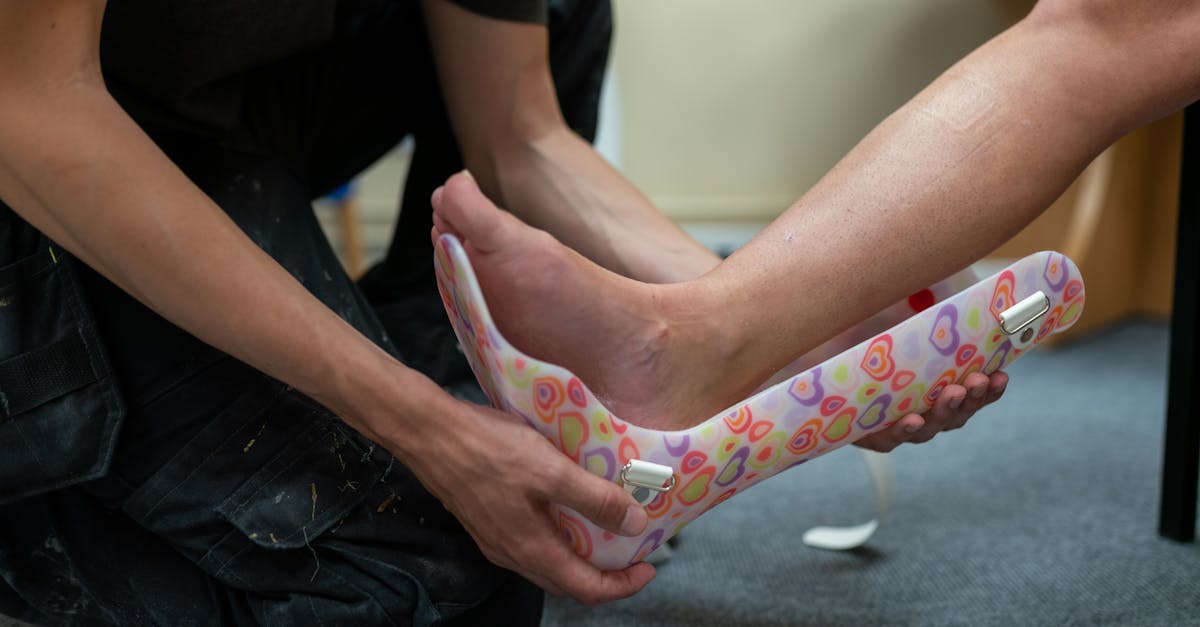
Boot Customization
Table Of Contents
Boot Customization
The experience of choosing the right pair of boots can often be daunting, especially when it comes to ensuring optimal comfort and performance. One solution that has gained popularity among outdoor enthusiasts is custom footbed boot fitting. This process not only addresses the common issues of improper sizing and support but also tailors each pair to the unique contours of the wearer's feet. As more people seek to enhance their footwear experience, custom footbed boot fitting has emerged as a critical aspect of boot selection, providing a personalized touch that can significantly improve comfort during long hours on the trail.
In the realm of outdoor activities, the importance of proper boot adjustment cannot be overstated. Poorly fitting boots can lead to discomfort, blisters, and even long-term foot problems, detracting from the overall experience. Custom footbed boot fitting allows for precise adjustments that accommodate specific foot shapes and preferences. This level of customization ensures that whether you are hiking, skiing, or simply navigating city streets, your boots will provide the necessary support and alignment, enhancing your performance and keeping discomfort at bay.
Choosing the Best Boot for Your Style
When it comes to boot fitting, choosing the right footwear is important for maximum performance and comfort. Each need requires particular features that may enhance your experience. Take for instance, when you are hiking, you will want boots that provide good support and durability, while lifestyle wear may prioritize fashion over technical features.
Fitting is another key aspect to evaluate when selecting your footwear. Your well-fitting boot should hug your foot without causing discomfort. Remember that the shape of feet vary greatly, so fitting multiple options is recommended. Moreover, look for features such as waterproofing that align with your specific preferences to ensure your footwear not only fits well but also performs effectively in various conditions.
Considerations to Evaluate When Choosing Ski Boots
As you picking boots, a person needs to consider the factors that can affect performance. The proper dimension is essential as it can determine your complete experience on the slopes. Furthermore, leg width and instep are vital factors that can greatly impact how well the boots function.
Another important factor to think about is boot stiffness of the boot. Various levels of flex can enhance maneuverability and balance when skiing. Also, boot insulation material can impact warmth and comfort throughout the day. Ultimately, taking the features of the boot can also make a role in your complete experience.
Methods to Care for Your Footwear
Proper care is crucial to maintain the durability of your ski boots. Regular washing is vital for removing dirt, salt, and moisture that can damage the material. Employ a damp cloth to wipe down the exterior and a soft brush for any stubborn spots. After cleaning, let your boots to air dry at room temperature, avoiding direct heat sources that can cause cracking or warping.
Conditioning on leather boots may also boost their appearance and ability to repel water. Make sure to use products specifically designed for your type of boot material. Keep your boots in a cool, dry place when not in use to prevent mold and mildew growth. Reflect on using boot trees or stuff them with newspaper to help maintain their shape. Implementing these simple practices will help keep your boots looking great and performing well for years to come.
Effective Tips for Keeping Footwear Boots
In order to extend the durability of ski boots, suitable care is essential. Commence by cleaning the boots after each use. Employ a soft brush to remove dirt and debris while ensuring you do not damage the material. Following cleaning, allow the boots to air dry away from direct heat sources. Such helps maintain the shape and integrity of the materials. Additionally, applying a protective treatment can help ensure the boots shielded from moisture and stains.
Regular inspections of the boots are vital for spotting any signs of wear and tear. Inspect the soles for any damage or excessive wear, as well as the laces for fraying. Replacing worn-out components promptly can help avoid larger issues down the line. Placing your boots in a cool, dry place when not in use helps prevent mold and mildew. Incorporating boot trees or stuffing them with newspaper can help maintain their shape and absorb excess moisture. These kinds of practices ensure your boots remain functional and ready for your next adventure.
Advanced Methods in Boot Fitting
The art of boot fitting has transformed thanks to modern technologies. Three-dimensional scanning has become a key development in achieving a perfect fit. This facilitates fitters to capture the exact shape of a user's foot, which provides that all contour is taken into account. Furthermore, heat-activated liners have gained popularity as another cutting-edge method that enhances comfort and performance.
A further approach that shows the advancements in boot fitting is the use of custom insoles. By utilizing advanced materials and designs, tailor-made insoles deliver stability that aligns with the unique form of an individual's foot. This fusion of high-tech solutions guarantees that every skier or snowboarder can enjoy a secure fit, resulting to better performance and reduced fatigue. With these modern methods, the future of boot fitting appears exciting.
Understanding Effect of Advancements on Ski Boot Fitting
Advancements have changed our approach to ski boot fitting in recent years. By utilizing 3D scanning, boot fitters can produce precise models of individuals' feet. This permits for personalized fittings that promise comfort and performance on the slopes, as a result enhancing the overall skiing experience.
Additionally, new technologies in materials have led to the development of ultra-lightweight and more adaptable boot designs. These improvements not only boost comfort but also facilitate skiers to have better control and responsiveness. With these technological solutions, ski boot fitting industry continues to progress, making it more efficient for skiers to find the perfect fit.